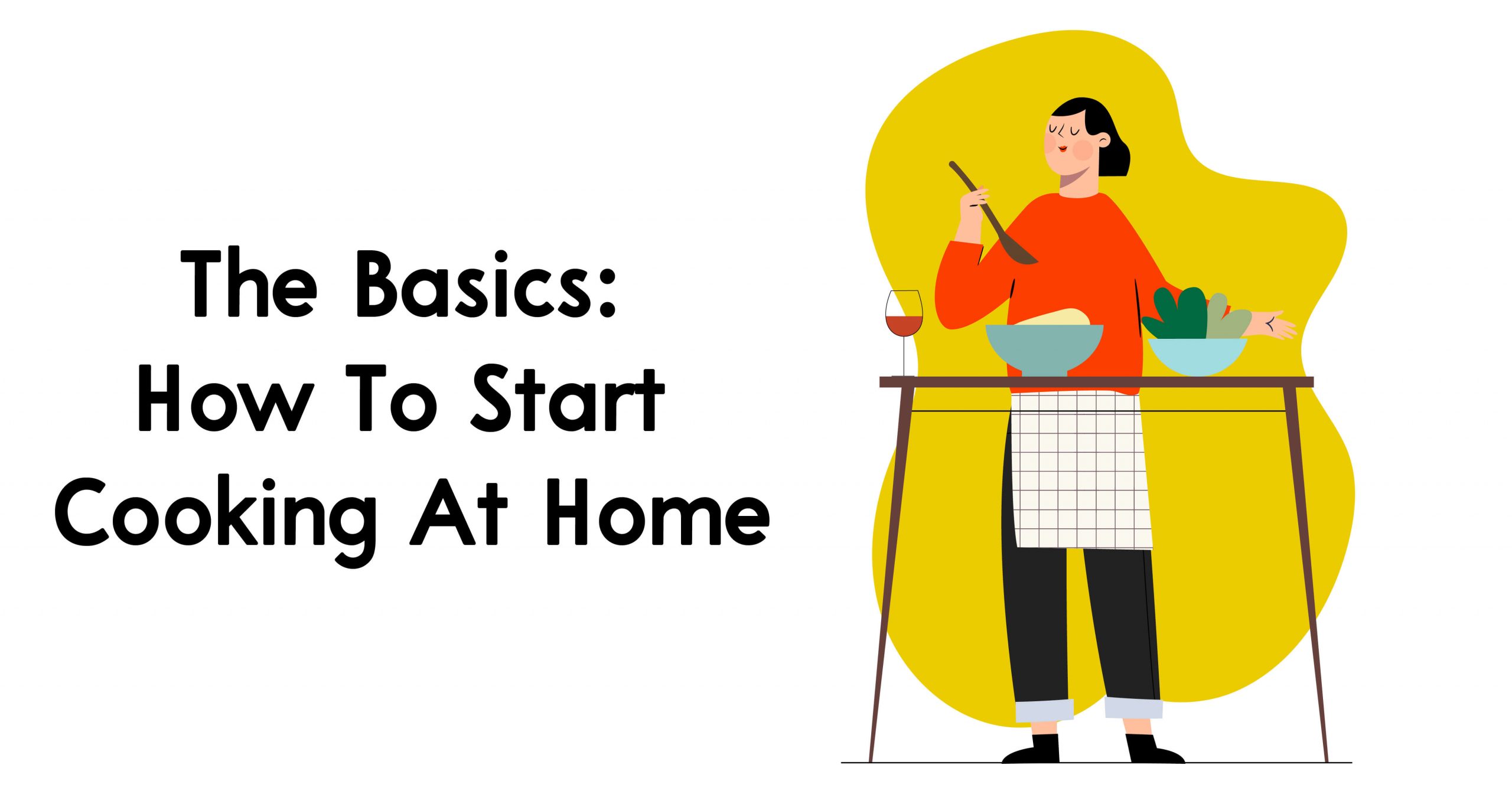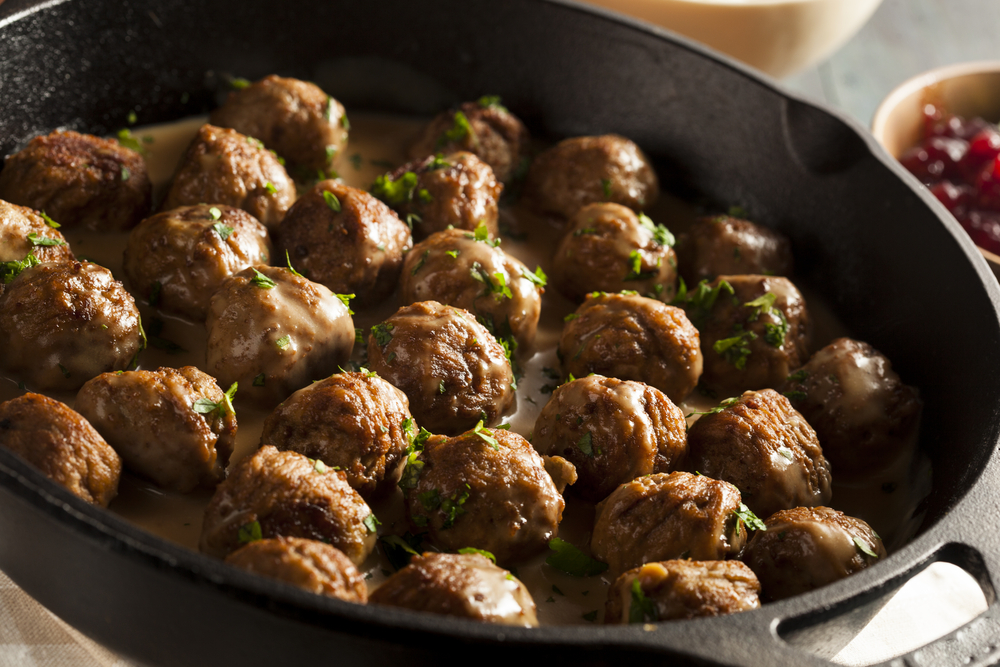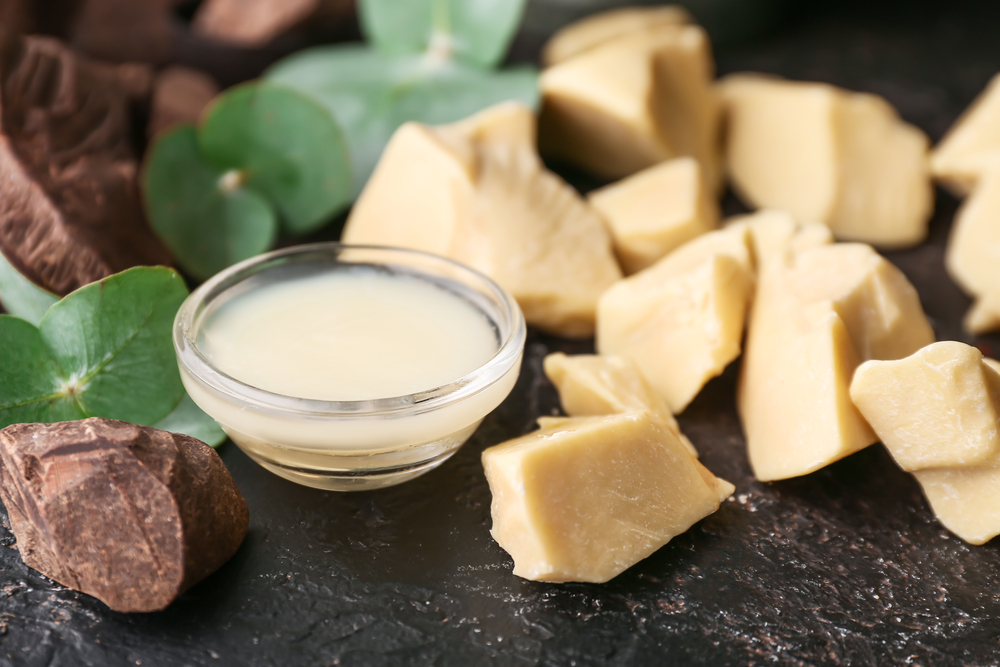Shrimp shells, commonly thrown away when you devein and peel the shrimp, may make you wonder if that is being wasteful. Can you use the shrimp shells for something else? Can you eat them? News for you, you can certainly eat and consume shrimp shells with little to no risks!
Packed with nutrients, minerals, and vitamins, shrimp shells, can frankly be a great addition to your existing diet. Having lots of health benefits and vital nutrients makes for the perfect addition to any of your current shrimp dishes. Leave the shell on!
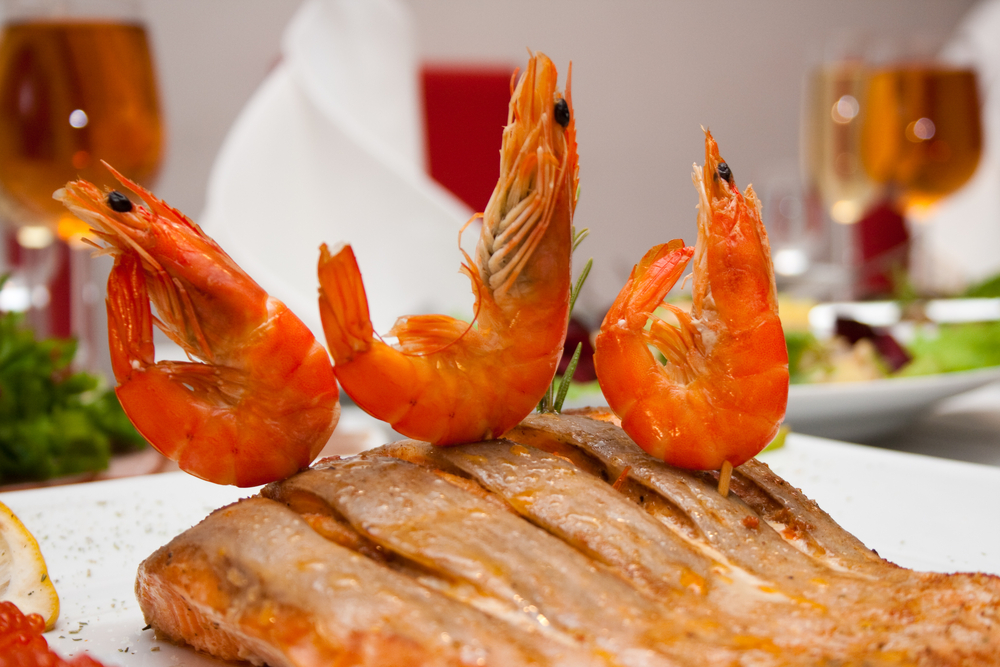
Can You Eat the Shell of a Shrimp?
Although it may seem a bit distasteful, you can certainly eat the shrimp shell! You may think that because of its hard texture, you would not be able to consume the shell, as most people would. Most Asian cultures, along with many others, will eat their shrimp and prawn together with the shell still on.
Leaving the shell on your shrimp can give additional health benefits! Most people toss the shell of the shrimp, thinking it’s inedible. However, you can maximize the shrimp’s health benefits without worrying about getting ill if you consume your shrimp with the shell.
When consuming shell-on shrimp, take precautions with thick shells as they may need extra cooking time to soften. It would be best if you always softened your shrimp shells as one, it makes them more palatable, and two, it is easier for your body to pass through your system.
What Are Shrimp Shells Made Of?
Shrimp shells are made primarily of chitin, a starchy and plastic-like compound that has a makeup of amino sugars. Chitin is the most abundant amino polysaccharide polymer that transpires in nature. As a changed form of carbohydrate, chitin is the main component of shrimp shells, along with many insects and the cell walls of fungi.
Shrimp shells are high in protein and minerals such as phosphorus, zinc, calcium, and sodium. Shrimp shells also have traces of keratin, a fibrous protein that forms the central structural component of nails, hair, hooves, feathers, claws, horns, and more. Keratin can give your nails and hair some integrity!
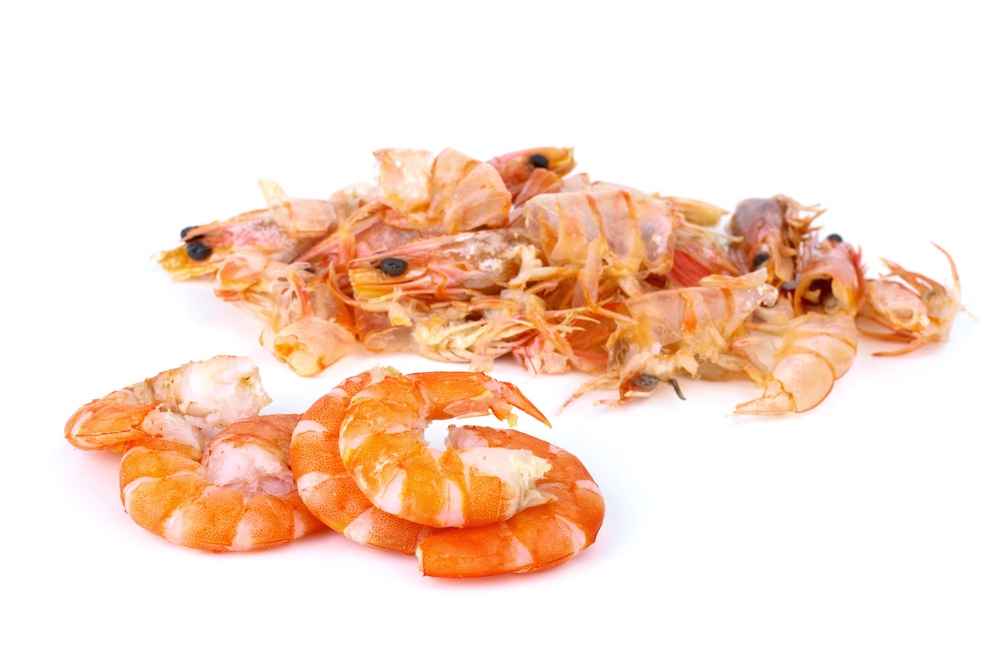
Though a bit difficult for your body to digest, you don’t need to fret because they can easily pass through your system and benefit from all the minerals and nutrients. Shrimp shells, with their intensely sweet seafood taste, also have a higher glutamic acid content.
What are the Benefits of Eating Shrimp Shells?
Shrimp shells indeed have lots of health benefits; however, they are far from being considered a superfood. You can receive many benefits from shrimp shells; a common one is regulating your weight. Studies have shown that consuming shrimp shells still on the shrimp meat can affect your short and long-term weight loss. Shrimp with shells still on can help you on your diet to lose weight!
Lipids are a crucial part of your health. Shrimp shells contain a notable amount of lipids; lipids are a group of compounds plus fats, waxes, oils, triglycerides, and sterols. These lipids are what doctors and experts use to assess cardiovascular risk. Lipids account for most of the fat present in your body and are water-soluble. However, too many lipids can put you at risk for heart or liver disease.
As well as being great for weight loss and regulation and containing lipids, shrimp shells are rich in vitamins and minerals. Calcium, a prominent mineral in shrimp shells, can be great for strengthening your bones and teeth. Shrimp shells also contain vitamin B12, which is essential for your body to form DNA and red blood cells. Along with many nutrients, shrimp shells can also lower your blood pressure!
What Can You Do With Leftover Shrimp Shells?
There are many recipes and ways you can use your leftover shrimp shells, such as flash frying or making a broth. To successfully use and consume shrimp shells, you should cook, boil, or fry long enough for the shell to become soft and brittle sufficient to bite through. In any case, you should never toss your shrimp shells because they can be very beneficial. You don’t want to waste something so helpful, do you?
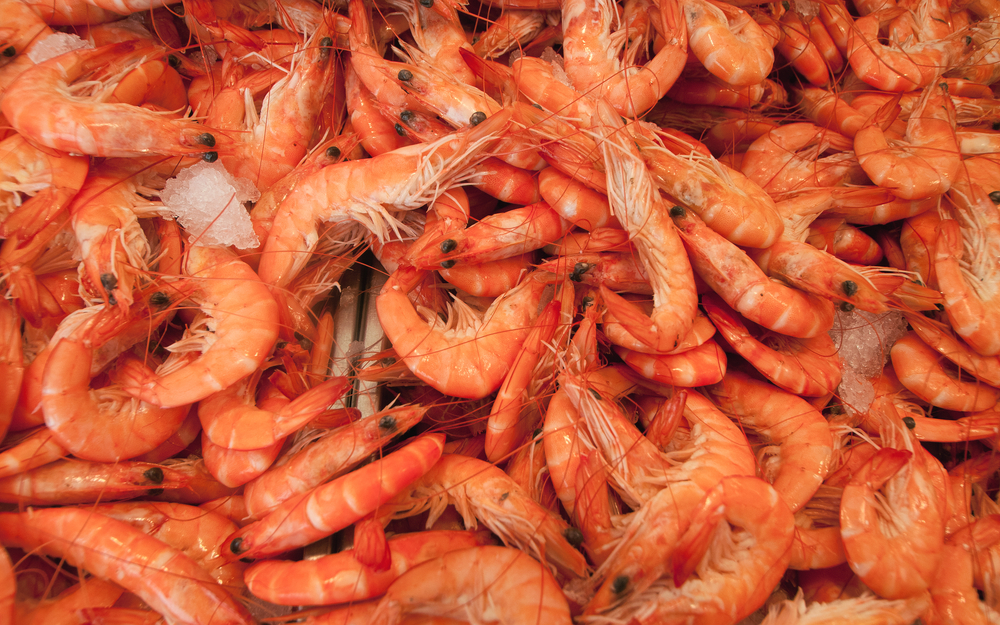
1. Shrimp Broth or Stock
Shrimp with the shell on is ideal for making shrimp broth or stock. The shrimp shells will thicken your broth, making it a flawless texture for any of your recipes using shrimp broth or stock. A classic risotto or base for your seafood stew or soup can be the perfect use for your shrimp broth or stock.
For this specific recipe, you will need the following:
- One pound of shrimp shells.
- One bay leaf.
- One ounce of dried shrimp.
- Three roughly chopped garlic.
- One tablespoon of olive oil.
- Two large thyme sprigs.
- Salt and Pepper.
You can add and change this recipe as you please; this is only a rough idea of a homemade shrimp broth or stock. Follow the subsequent steps to cook this recipe:
- Pour your olive oil into a small pot or pan over medium-high heat.
- Add your thyme sprigs, bay leaf, dried shrimp, garlic, and shrimp shells to the small pot or pan.
- Let the mixture sizzle for 1 to 2 minutes, stirring occasionally. Do not let your blend brown.
- Add 7 cups of water to your small pot or pan and bring it to a boil.
- Once you have reached a boil, reduce your heat and bring your mixture to a gentle simmer.
- You can season the shrimp broth to taste with salt and pepper.
- Simmer your mixture for 30 minutes.
- After 30 minutes, strain your mixture through a fine-mesh sieve.
- Enjoy your shrimp stock or broth!
2. Shrimp Bisque
Another recipe you can attempt is a simple shrimp bisque. Using shrimp with the shell left on in this shrimp bisque is what gives it all of its flavors! This simple shrimp bisque can be perfect for a dinner party or on a cold, snowy night with the family. However, ensure that none of your guests have a seafood allergy, which could end badly for everyone.
You will need the following for this recipe:
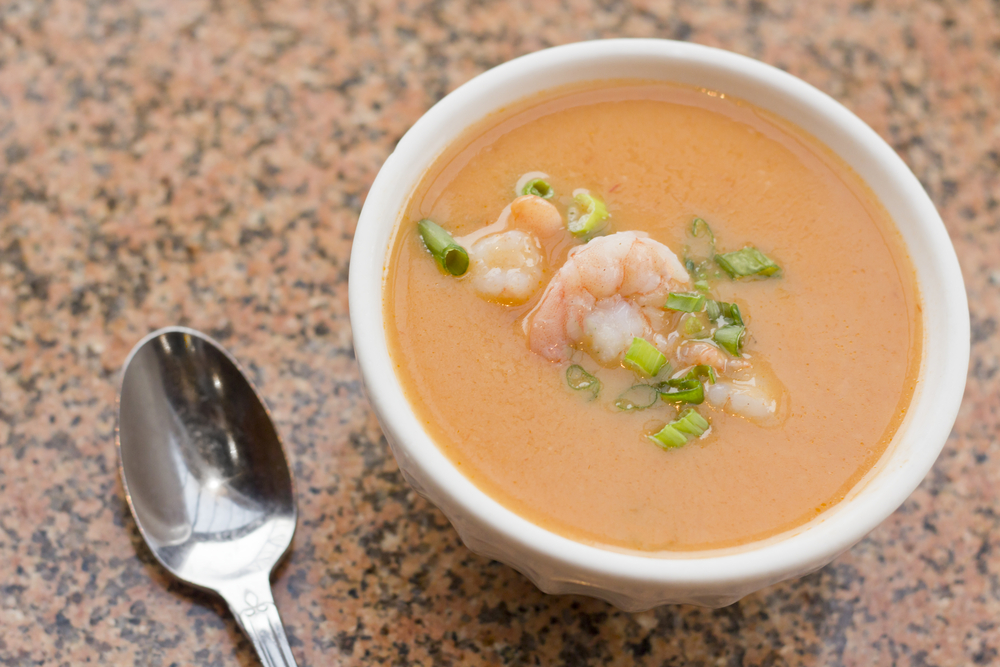
- 8 cups of water.
- Four divided Tablespoons of unsalted butter.
- Shrimp shells from 1.5 pounds of shrimp.
- 1/4 cup of white or brandy wine.
- Two teaspoons of salt or fish sauce, either one will work.
- Two chopped Plum or Roma tomatoes, no skins.
- One stalk of celery.
- One diced medium carrot.
- One diced large sweet onion.
- One tablespoon of tomato paste.
- 1/2 cup of uncooked rice.
- One tablespoon of brandy of your choice.
- Three fresh sprigs of thyme, just the leaves.
- 1/2 cup of half-and-half or heavy cream.
- Two tablespoons of lemon juice.
- Salt and Pepper.
- Pinch of cayenne pepper.
- Sour cream for garnish.
A slightly lengthy list of ingredients, but it is most definitely worth it once you taste this shrimp bisque!
Follow these steps to cook your shrimp bisque:
- Make your shrimp stock by bringing your water to a boil in a large pot.
- While the water is heating, you can add the fish sauce or salt. Stir to dissolve.
- Toss in your shrimp shells.
- Once your water has reached a boil, lower your heat and bring your shrimp stock to a gentle simmer.
- Strain your mixture through a fine-mesh sieve.
- To make the soup, you must melt one tablespoon of your butter over medium heat in the same pot you made the shrimp stock.
- When your butter is shimmering, add your shrimp. Saute your shrimp for roughly 2 to 3 minutes, flipping each shrimp.
- Shrimp should be opaque and lightly browned in a few spots.
- Melt two tablespoons of butter over medium heat.
- Add your carrots, celery, and onions.
- Saute until the vegetables are soft.
- Add the brandy or white wine and cook until most of the liquid has evaporated.
- Add tomato paste and stir well to combine.
- Finally, add your uncooked rice and chopped tomatoes, and saute for 4 to 5 minutes. Remember to stir it frequently to prevent burning.
- Once you have added your vegetables, rice, and tomatoes, you can add the shrimp stock or broth you saved back earlier. You can add the sauteed shrimp, pinch of salt, and thyme leaves at the same time.
- Once your bisque starts to bubble, reduce your heat to medium-low and simmer for roughly 20 minutes.
- After 20 minutes of simmering, you can use a food processor or immersion blender to blend your soup and make it completely smooth. Return your bisque to the stockpot.
- Pour your half-and-half or heavy cream into the stock pot and thoroughly incorporate it with your shrimp stock.
- Stir in the last tablespoon of butter.
- Add your brandy, a pinch of cayenne pepper, and lemon juice.
- Taste and season to your liking with pepper and salt.
- Ladle into serving bowls and place a dollop of sour cream in the center.
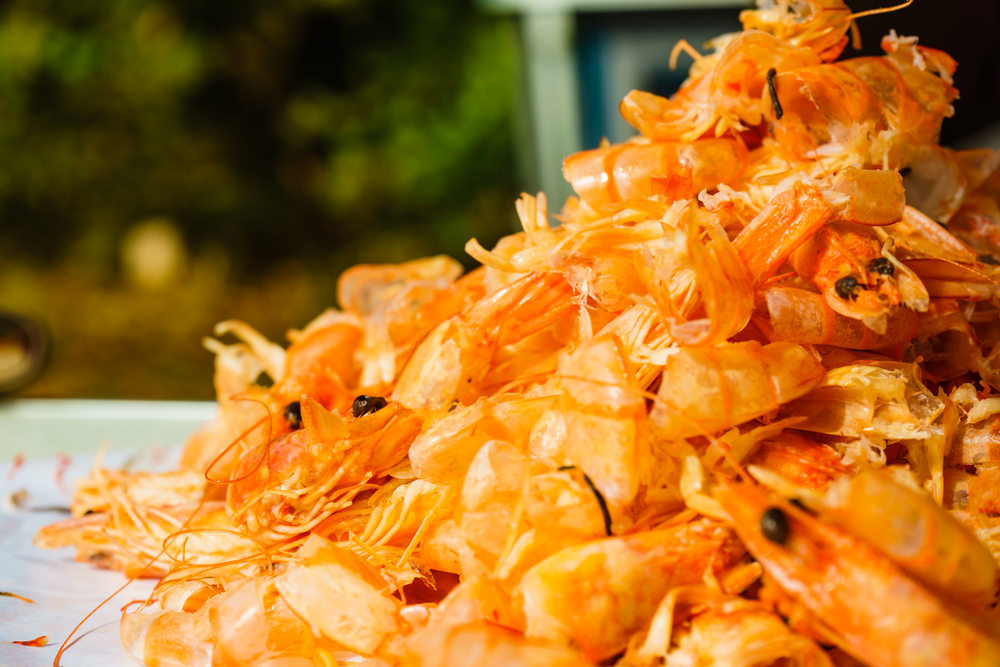
3. Flash Fried Shrimp
This method of cooking involves a deep frying approach that uses high heat. With this method, your shrimp shell will become thin and brittle enough to consume with a bit of a crispy texture. The texture becomes a bit more similar to sardine bones. Some claim that this frying method can be healthier than deep frying since deep frying expose your shrimp to the oil for 3 to 4 minutes, whereas flash frying is no more than 2 minutes.
However, a study debunks this theory, making flash frying no less or more healthy than deep frying.
To complete this recipe, you only need a few ingredients. The ingredients you need are as follows:
- Six large and uncooked shrimp with the shell.
- One cup of olive oil. (Enough to submerge your shrimp)
You can add batter if you’d like; however, this recipe does not include a batter.
To create this recipe, follow these simple steps:
- Place your olive oil in a pan or skillet.
- Turn on the heat to medium.
- Wait for your oil to heat when the oil starts to form tiny bubbles.
- Once your oil is warm, place your shrimp in the skillet. Ensure that you submerge your shrimp entirely in oil.
- Let the shrimp cook for no more than 2 minutes.
- Place your fried shrimp on a plate lined with paper towels to catch excess grease.
- Repeat with all of your shrimp.
- Enjoy your flash-fried shrimp!
Frequently Asked Questions
Can you eat shrimp legs?
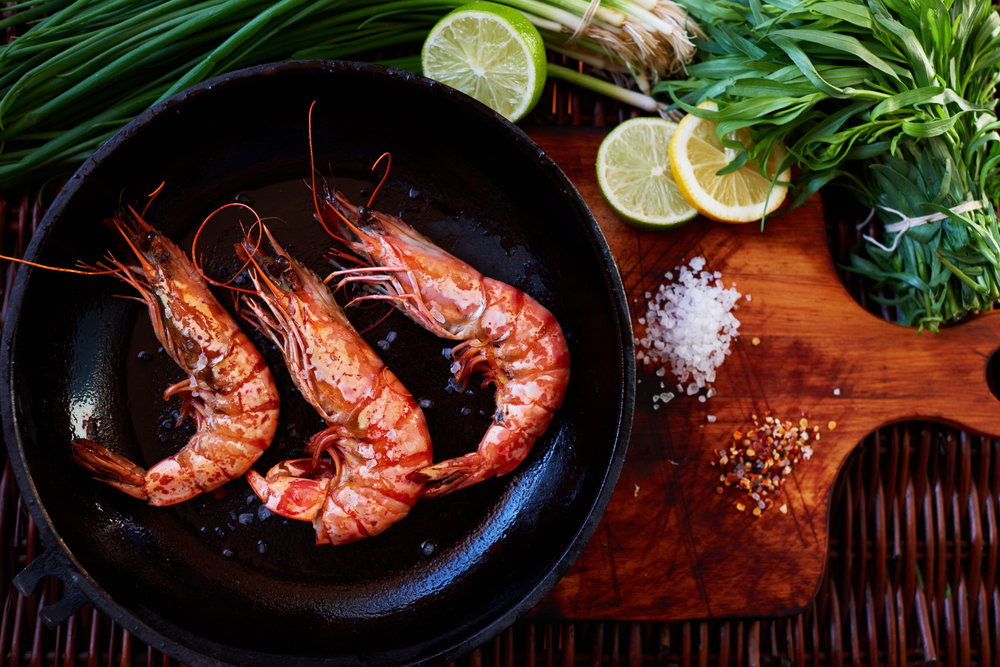
Shrimp legs are very palatable. The shrimp’s legs are distinctly different from the rest of the parts of the shrimp. You can safely enjoy shrimp legs, assuming you do not have an allergy.
Most people appreciate how the legs turn crispy after cooking, giving an undeniably lovely texture. Next time you get shrimp for dinner, don’t take off the legs or the shell to provide an excellent consistency to your dish.
Why do restaurants leave shrimp shells on?
For numerous reasons, most restaurants leave shrimp shells when serving their food. Number one is that it contains moisture and flavor while adding a bit of extra flavor. Not only does it add flavor, but it’s possible the food can be more attractive to the eye when they leave on the shrimp shell.
Another reason restaurants leave the shell on shrimp could be for the simple fact that it’s easier and faster. Why waste all that time peeling and prepping your shrimp when the shell could add flavor, texture, and aesthetic?
What part of shrimp do you not eat?
The vein of the shrimp, which is actually the shrimp’s intestine is where the shrimp’s waste disposal happens. That said, the vein usually has the fecal matter in it. Though this fecal matter can be acceptable to consume, you shouldn’t. To be safe, you should devein all of your shrimp to avoid any illness.
The intestine can hold a lot of bacteria that could easily make you ill. It’s a simple and easy process to devein. Why not just do it and save yourself a possible trip to the Emergency Room?
Final Thoughts
To finalize, you can eat shrimp shells even though your body struggles to digest them. Leaving your shrimp’s shell on could offer you the extra nutrients and health benefits you are looking for! You can still pass the shrimp shells through your system and absorb all of the nutrients, minerals, and vitamins they can provide you.



